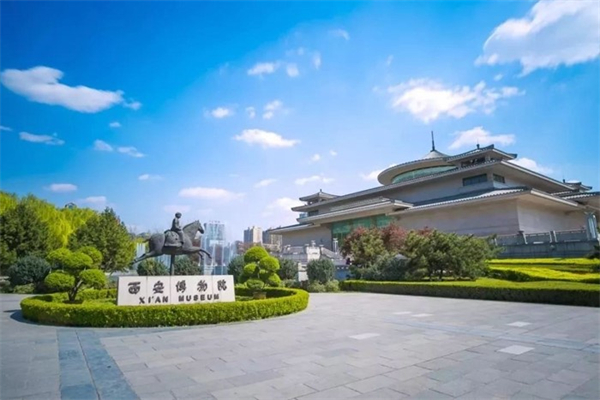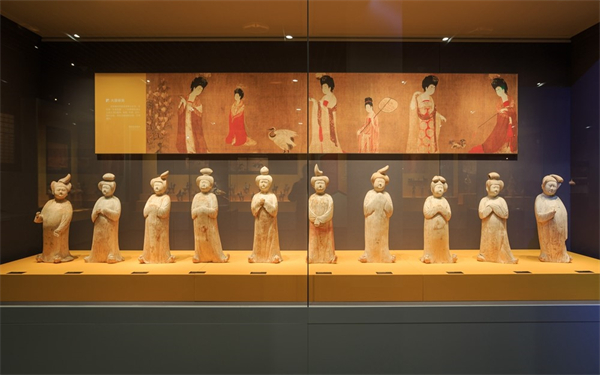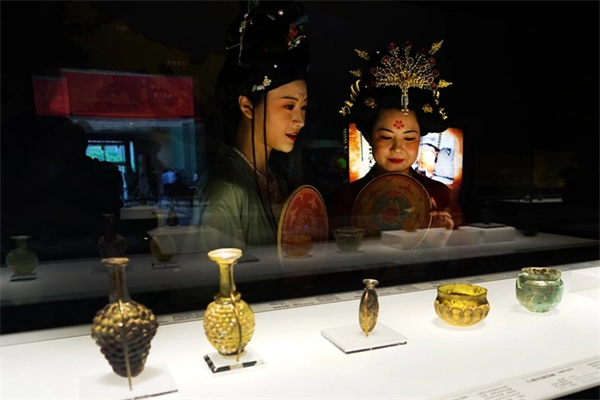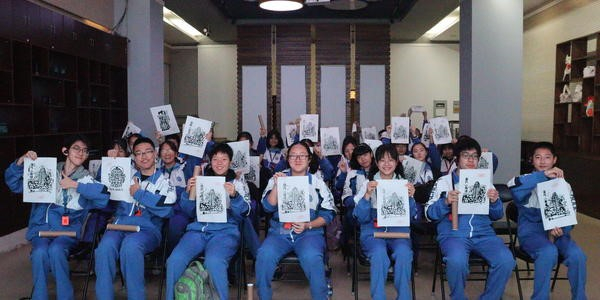Xi'an Museum brings cultural relics to life with digital technologies

Photo shows the Xi'an Museum in Xi'an, northwest China's Shaanxi province. [Photo from the official website of the Xi'an Museum]
The Xi'an Museum in northwest China's Shaanxi province has its unique charm among Chinese museums.
It comprises a museum designed with the philosophy of "round sky and square earth," a concept of traditional Chinese architecture, as well as the elegant Jianfu Temple and the Small Wild Goose Pagoda in the temple.
Over recent years, the Xi'an Museum has actively applied digital technologies in the protection and utilization of cultural relics, and worked to make innovation in exhibitions and bring more benefits to the public. It has presented the history of the Chinese civilization to more people.
"The application of digital technologies is a profound revolution for the preservation of cultural relics," Fu Haixiang, who's in charge of Xi'an Museum's department of collection preservation, told People's Daily.
In his computer, a virtual colored 3D model of the Stone Coffin of Shijun, a sogdian living in the Northern Zhou Dynasty (557-581), is vividly shown. The 3D version has no difference from the real one.
The Stone Coffin of Shijun is a very important cultural relic collected by the Xi'an Museum. The inscription and relief on it are precious.

Photo shows Tang Dynasty (618-907) pottery figures of court ladies displayed at the Xi'an Museum in Xi'an, northwest China's Shaanxi province. [Photo from the official website of the Xi'an Museum]
The virtual colored 3D model of the stone coffin was generated by high-precision laser scanning and synthesized with hundreds of millions of pixel-level high-resolution texture images.
"This digital application enables researchers to acquire information about the stone coffin anytime they want, while avoiding damages to the cultural relics that could possibly be caused by physical contact," said Fu.
As a site for the protection of ancient books at the national level, the Xi'an Museum collects over 100,000 ancient books. How to make these ancient books "usable" was once a challenge.
The application of digital technologies offered a solution. So far, the information of over 100,000 ancient books collected by the museum has been recorded in the virtual space, including their authors, graphic designs and copyrights.
Besides, the Xi'an Museum has launched active cooperation on ancient book preservation with the National Library of China, the China National Archives of Publications and Culture, and other important organizations for the protection of ancient books.
In May this year, the Xi'an Museum hosted an original exhibition presenting Xi'an's heyday in the Tang Dynasty (618-907), when it was known as Chang'an. It is the starting point of the ancient Silk Road.

Women in traditional Chinese costumes visit an exhibition at the Xi'an Museum in Xi'an, northwest China's Shaanxi province. [Photo from the official website of the Xi'an Museum]
The exhibition has attracted a number of visitors since its inception on May 22, showing them the exchanges and mutual learning between the Eastern and Western cultures along the ancient Silk Road.
One of the most important changes that have taken place to the Xi'an Museum over recent years is the innovation in exhibitions, said Zhu Gemin, deputy head of the museum's display and exhibition department.
Multiple outstanding original exhibitions held by the Xi'an Museum employed landscaping, modeling and images to display the treasures of Xi'an. The exhibitions were brought to multiple places across China, including Beijing, Tianjin, Suzhou, Shanghai and Xinjiang.
Today, hitting exhibitions at the Xi'an Museum is trendy among young people. This year, the number of daily visits to the museum stands at nearly 10,000.
In the hall of the museum, there is a service robot that offers help to visitors. Visitors can get a detailed introduction to the museum or cultural relics by simply talking with it or clicking the icons on a screen of it.
It can also serve as a tour guide for visitors. This has significantly improved the efficiency of the museum in serving the public.

Students experience woodblock printing techniques in a "Lezhi Classroom" activity at the Xi'an Museum in Xi'an, northwest China's Shaanxi province. [Photo from the official website of the Xi'an Museum]
On the second floor of the museum, children are always seen playing games designed on the ancient Silk Road knowledge guided by education specialists. The places and cultural relics mentioned in the games often interest the children.
"The Xi'an Museum today not only collects, studies and demonstrates cultural relics, but also offers education for citizens," said Tian Jiwei, who heads the education and promotion department of the museum, referring to a "Lezhi Classroom" program launched by the museum over the recent years.
The program aims at finding ways for children, persons with visual and hearing impairments, as well as seniors to get closer to history.
Rather than regular museum guides, "education specialists" designated by the Xi'an Museum could share cultural knowledge and offer social education services by hosting public education activities, speech contests, livestream shows and in-person symposiums.
The diverse public welfare activities have enriched the cultural life of citizens with vivid stories behind cultural relics, Tian said.
























